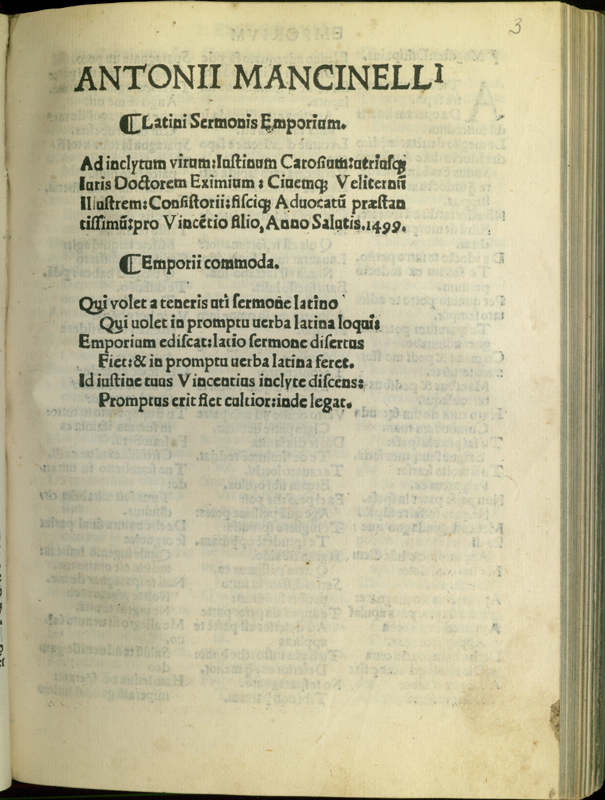0.06 Voices Nonetheless
The sources for this study are varied. Where possible I have consulted the archives of printers, booksellers, and teachers. But for the history of schoolbooks proper, I have privileged above all the title pages, prefaces, and appendixes of printed textbooks and works on pedagogical theory. These undoubtedly offer the most authoritative information about the intentions of authors and publishers. Sometimes they tell us all we can know about a given author or teacher. Always they tell us what the editors and authors wanted us to know, even though it is often maddeningly unlike what we really want to figure out.

As the fifteenth century turned to the sixteenth, it became more and more common to festoon new texts and new editions of ancient texts with commendatory letters and poetry, that is, with endorsements. Schoolbooks, naturally, were usually endorsed by teachers. Lisa Jardine has shown how these commendations evidence networks of patronage and circles of intellectual acquaintance. As such they point up how textbooks could be more than popularizations for students. They were also important loci of intellectual debate among humanists. Prefatory texts must be read as self-conscious advertising prose; but they sometimes also offer more candid remarks. There are moments when teachers, authors, editors, printers, or publishers speak directly about two subjects that concern this book deeply -- how teachers got new schoolbooks into print, and how students used them. (36)
NOTE
- Open Bibliography
- (36) On the humanist commendatory preface: Jardine 1993, 175-180; Farenga 1994; Munzi 1994, 103-106; Flood 2003, 145-147; Jones 2004, 196-206; Crane 2005, 32-59; Kaufman 2006, 166-167, 178-181.